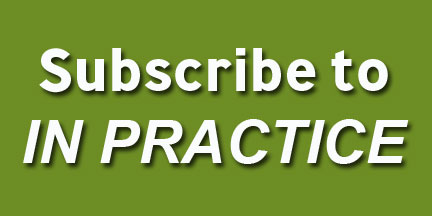Willow Brush Ranch - Starting from Scratch
- Oct 11, 2017
- 8 min read
This article by Keri Nelson was originally published in IN PRACTICE, Issue #169.Kelly was a good ol’ 4th generation cattle and grain farm boy. I was a typical hard headed, stubborn, get er’ done City Girl. In 2007, Kelly was sent off the family farm to find his fortune, and support his growing little family and became an electrician. Little by little since the day Kelly and I set out into the world, we have slowly inched our way back to the land. Now as proud renters on family land our dreams are near. While not living out the idea of farming the family has (“You should go buy some cows and land”), we are marching to the beat of our own drum and expanding our knowledge in a different kind of farming.
With various courses, seminars and books read and studied, the ideas of how and where to begin started. In 2014 at a Ladies Livestock Lessons conference, I was immersed in the farming community, and beyond all inspired that women can do this. In the fall of 2015, I came home with an idea. There was a “holistic” farming course running in the New Year and I thought we should take it. Kelly’s reply was “A what?” As we set off to the planning meeting full of questions, some stubborn paradigms, and a lot of confusion, we gave it a chance. In January 2016 the course began and we were off to the races.
Paradigms, Communicating and Goals
The first weekend was full of learning what kinds of paradigms we have heard, live in and believe are true. Some examples of these paradigms are: “There’s no money in farming,” “Cash poor, Land rich,” “The only way to farm is with chemicals,” etc. With a huge shift in thinking and having the world of possibility suddenly open up, the challenges were easier to see and the solutions more attainable.
Communication is always a work in progress. But with the course, we learned that using communication effectively with different statements such as “I feel” we have found it easier to communicate with extended family members.
The biggest challenge we faced was writing a Holistic Goal, and where to even start. Singular goals are much easier to come up with because it doesn’t involve anyone else or have any heavy meaning in life. A Holistic Goal is real; it’s all encompassing; it’s what you want to work toward. The notes from our goal was: “sustainable, family oriented, community involved, open spaces, wellness.”
Through our Goal and Vision Statement we made decisions on what we actually wanted to do, which is nothing even remotely close to what we had originally thought. In the beginning it was Kelly’s dream to “have big, new machinery, lots of cattle and lots of land. I was all about “big garden to feed two growing boys, all different kinds of cute, mostly baby animals, cute little farm house with a little red barn, and a horse, small land space.” Basically Kelly wanted what he has always known and craved to get back to, and I wanted a funny farm. Writing a goal and vision statement brought us together to a visible future of what we actually want. Yes, it will still involve cattle, at some point. Our boys Kaleb, 8 and Koen, 5 even sat down for a big family brainstorm and goal writing session with us. They completed our goal with pictures—of giraffes. Getting the whole family involved gets everyone excited and wanting to work toward something in common. I feels it’s a very natural thing to include the kids on the goal setting and brainstorming front because at the end of the day it is for them. One day they will do their own thing, hopefully on the farm.
Farming without Land
There are many ways to farm and for kids who are wanting to start out in Alberta it is almost impossible to buy land, build a house, and afford the startup costs of whatever path you want to take for farming. With the average age of farmers in Canada being 55 years of age there is land out there. Some farmers are wanting to retire and are hoping their kids will come back from the city to farm or want to leave a legacy to their family when they pass on. However, when a farmer retires and there is no one to jump in and man the ship, then we end up with a lot of land with no one to work it. The practice of renting land from other farmers for crop or pasture is almost as old time, but is an easy little jump for a “First Time Young Farmer.” Renting land is far cheaper than mortgaging it, and most rental agreements can go from one growing season to many years. Sometimes you find the old farmer who is just so happy that someone is doing something on the land and it’s not sitting idle. If you’re lucky enough to find family land to farm on, the costs can be different.
Renting land from family can be a challenge in itself due to the emotional attachment to the land, and the change that is created when a younger generation doesn’t generally agree wholly on what the older generation is practicing. There is no one way to farm. Different people work in different ways and work according to their location and growing season, what’s available for startups and what they know. When you break out new ideas to a family who hasn’t done that particular avenue it can be stressful, and hard to get started.
There is a certain paradigm within old farming families, which are generally a monocropped or cattle in feedlot style, that small mixed farms “won’t work” and “won’t make any money.” So, let’s compare the income from canola versus the 1-acre market garden. Yes, the canola producer may make gross more income, but once the costs are added up for cost of land, seed, spray, fertilizer, cost to purchase and maintain equipment, and, trucking, who is really getting further ahead? Most market gardens or CSA’s have a small tractor or even a walking tractor, less land costs, less seed costs and most are leaning back on the old organic and permaculture ways. The risks are less and the profit potential may be higher.
The older generations of farmers have been told for decades about feeding the world and working in the paradigm of “more, bigger, better, faster,” when the new younger generations have shifted in thinking to local, community-involved farming. Hence, CSA’s (Community Supported Agriculture) and small mixed farms are popping up. There is a global shift with younger generations to support local, basically going back to the way life used to be in Great-Grandma’s time with sourcing local food. It’s fresher, lasts longer and is usually cheaper once you cut the large chain middle man.
Kelly and I are some of those young renters, living in town about 15 minutes away from the family farm. It is a short “commute” for me to get to the farm every day. With Kelly still working an off-farm gig as an electrician, I really wanted to get started with something small, something I could handle on my own for the most part, something the kids could be involved with and learn from. So March 29, 2016 the first batch of chicks came. 200 heritage breed chicks to be exact. Through the Holistic Management decision-making matrix Kelly and I realized that we did not want to run a commercial breed for egg layers or meat birds. We wanted the flexibility of butchering the cockerels for meat and saving the pullets for eggs. While the egg production isn’t as high as the commercial birds, they also take longer to grow into egg production and butcher size. They are a hardier bird that can withstand the harsh Canadian climate easier.
The Ranch
Our operation is close to 2 acres of land that hasn’t been utilized for almost 20 years. There’s pasture for the approximately 100 cockerels (meat chickens) and the 70 turkeys who will be living in some Salatin-style tractors and who will be rotated through the pasture as needed. The pullets will be in an old wooden grain bin converted into a chicken coop and will have rotational yarding. We also have a 20,000 sq. ft. market garden with a successive planting and crop rotation planned out. This small beginning has allowed us to keep costs relatively low and manageable using Kelly’s off farm job to finance until our business gets off the ground. I have maintained a tight schedule of when everything needs to be planted, moved, harvested and butchered while still allowing for some fun family time. The balance has been fairly easy so far, but as the season picks up there will be more running for the whole family.
The Holistic Management course that Kelly and I took early this year has created an awareness to think outside the box, to look at avenues that aren’t the norm for the family and to create our own path. For a young family with little to no money to start a farm is a challenge that we are working daily to achieve. With the financial portion of the course, we learned to set our profits then set our expenses within what was left over. We also learned how to create a financial model so the farm can flourish and thrive in the years to come. We constantly consider what machinery is actually required to purchase and if we can get away with renting some sorts of equipment to get by for now. It’s a lot to take in for the first season, but with careful planning and by starting small we are looking forward to a bright future of living a sustainable life while feeding our family, giving back to the community, and creating a solid rental land base we can expand in the following years to be able to step closer toward our Holistic Goal.
Did you enjoy the article you just read?
is HMI’s bi-monthly journal for anyone interested in land health, food security and cultivating thriving communities. It’s full of inspiring articles that will keep you in touch with the progress, innovations and excitement generated by people who are changing their lives by putting Holistic Management into practice.
IN PRACTICE’s 2,200 loyal subscribers (90% in the US) eagerly await each issue. Be sure to sign up so you can learn how people are helping create healthy land, healthy food and healthy lives and stay connected with the Holistic Management community!
You can purchase a subscription in the
. If you’ve never received In Practice before, email us at hmi@holisticmanagement.org and request a FREE electronic introductory one-year subscription.
Would you like to see some of HMI’s back issues for a particular subject?
and find a wealth of case studies and other useful information for the practice of Holistic Management.
When you advertise with us, you benefit from the kind of credibility that money alone can’t buy. Our readers will identify your business as having a product that can help them achieve the quality of life they are working to create and that appreciates a management approach that is economically, ecologically and socially sound.*
*Our classified ads start at as little as $25 an inch and display ads start at $100. See our Rate Card for further information on the benefits, rates and closing dates. If you have any questions, contact Ann Adams, our Editor and Executive Director at anna@holisticmanagement.org.




